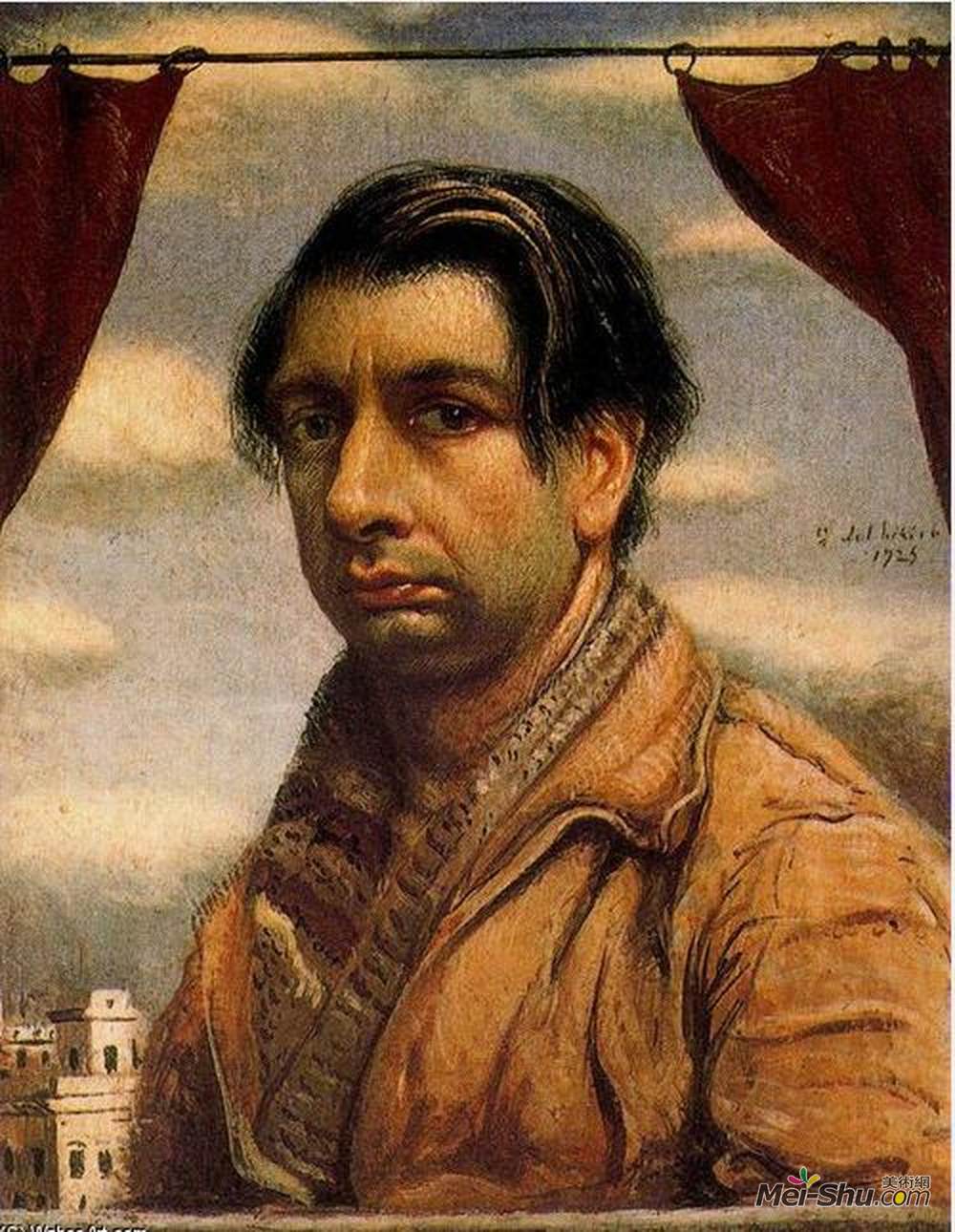
吉尔吉奥·德·奇里柯(Giorgio de Chirico)
艺术家: 吉尔吉奥·德·奇里柯
生于: 1888年7月10日;
卒于: 1978年11月20日;11月20日1978
国籍: 意大利
流派: 超现实主义,形而上学艺术
领域: 绘画
受影响: 拉斐尔,Arnold Böcklin,阿尔弗雷德·库宾,马克斯·克林格
影响: 萨尔瓦多·达利,Rene Magritte,卡洛·卡拉,Metaphysical art,Surrealism,Lettrism,Yves Tanguy,George Ault,莫兰迪,Neo Rauch
朋友: 阿米地奥·莫迪里阿尼
机构: 慕尼黑(慕尼黑美术学院学院,慕尼黑,德国),雅典美术学院(ASFA),雅典,希腊
《P》是形而上艺术运动的创始人,Giorgio de Chirico是意大利(生于希腊沃洛斯)超现实主义画家,其作品隐含着对现实的形而上学质疑。在Athens和佛罗伦萨学习后,他移居德国,在慕尼黑的美术学院学习,受到尼采和亚瑟·叔本华的影响。在去巴黎的路上,De Chirico回到了佛罗伦萨,后来又回到了都灵,在那里他被周围的形而上的美所感动。1913,他首次在独立沙龙展出他的作品,并出售他的第一幅画,红塔,后来与艺术经销商Paul Guillame签约。第一次世界大战爆发后,De Chirico返回意大利,入伍。然而,他被认为不适合战斗,被分配到军队医院工作。在此期间,他继续以独特的形而上学风格绘画。1919年秋天,德奇里科在一家艺术出版物上发表了一篇文章,主张拉斐尔和西诺雷利等大师重返古典肖像学。他还公开批评现代艺术,并成为直言不讳的反对者。到1939年,他以新巴洛克风格绘画,深受彼得·保罗·鲁本斯的影响,但他后期的作品却从未受到过对其早期作品的批评。他对他后来的作品缺乏赞誉,他认为他的作品更成熟,质量更高。为了盈利和报复,德奇里科为自己的作品制造了过时的赝品,并谴责他以前的许多作品是赝品。De Chirico一直是个多产的艺术家,画画到第九十岁。他的绘画对超现实主义运动产生了巨大的影响,为马克斯·恩斯特、萨尔瓦多·达利、雷内·马格里特、菲利普·古斯顿等著名艺术家提供了灵感。他的画作进一步激发了书籍、音乐甚至电子游戏。
/P>
Artist :Giorgio de Chirico
Additional Name :Giorgio de Chirico
Born :10 July 1888
Died :20 November 1978
Nationality :Italian
Art Movement :Surrealism,Metaphysical art
Influenced by :raphael,arnold-bocklin,alfred-kubin,max-klinger
Influenced on :salvador-dali,rene-magritte,carlo-carra,artists-by-art-movement/metaphysical-art,artists-by-art-movement/surrealism,artists-by-art-movement/lettrism,yves-tanguy,george-ault,giorgio-morandi,neo-rauch
Friends and Co-workers :amedeo-modigliani
Art institution :Akademie der Bildenden Künste München (Munich Academy), Munich, Germany,Athens School of Fine Arts (ASFA), Athens, Greece
The founder of the Metaphysical art movement, Giorgio de Chirico was an Italian (Born in Volos,Greece)surrealist painter, whose work implied a metaphysical questioning of reality. After studying in Athens and Florence, he moved to Germany to study at the Academy of Fine Arts in Munich, where he was influenced by the writings of Nietzsche and Arthur Schopenhauer. On his way to Paris, De Chirico traveled back to Florence and later to Turin, where he was moved by the metaphysical beauty of the surroundings. He exhibited his works at the Salon des Independants for the first time in 1913, and sold his first painting, the Red Tower, later signing with the art dealer Paul Guillame.
Upon the outbreak of the First World War, De Chirico returned to Italy, and enlisted for the military. However, he was considered unfit for combat and was assigned to work in a military hospital. During this time, he continued to paint in his unique metaphysical style. In the fall of 1919, De Chirico published an article in an art publication, in which he advocated for a return to the classical iconography by such masters as Raphael and Signorelli. He also openly criticized modern art and became an outspoken opponent of it.
By 1939, he was painting in a neo-Baroque style, heavily influenced by Peter Paul Rubens, but his later works never received the critical praise that was lavished upon his earlier works. He resented the lack of praise for his later works, which he considered more mature and of better quality. Both for profit and as an act of revenge, De Chirico produced back-dated forgeries of his own works, and denounced many of his previous works as forgeries.
De Chirico continued to be a prolific artist, painting up until his 90th year. His paintings strongly influenced the surrealist movement, providing inspiration for such prominent artists as Max Ernst, Salvador Dali, Rene Magritte, and Philip Guston. His paintings have further helped inspire books, music and even video games.